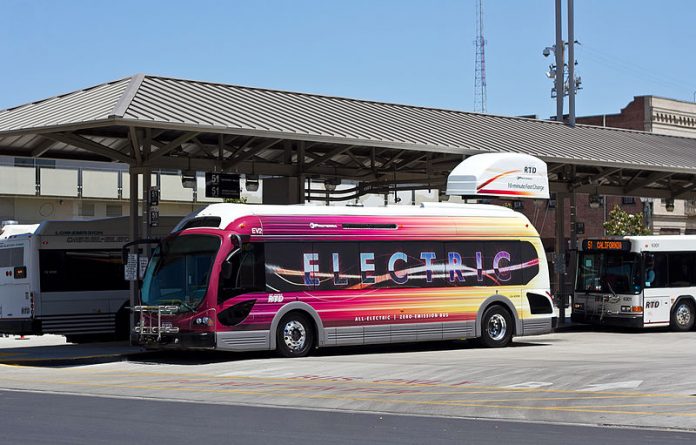By The Antiplanner
Electric buses weigh more and put more stress on infrastructure than regular buses, as Indianapolis transit agency Indygo realized when it discovered that the streets it paved for its bus rapid transit lines were wearing out after less than three years of service. Now it is repaving those streets, which is causing problems for businesses and annoying residents along the routes.
The Indianapolis Department of Public Works had urged Indygo to use thicker pavement, but Indygo — which was already spending four years and too much money on a bus line that it could have started practically overnight at little cost — decided to save money on a part of the project that would be less visible to most people. After all, the point of the project was to please politicians with colorful buses and flashy bus stops, not to provide better transportation service.
Typically, Indygo refuses to accept the blame for the problem, instead saying it was due to “aging infrastructure” (yes, it was almost three years old). The agency also labels the millions of dollars that it is now having to spend “enhancements” instead of repairs due its incompetence.
A couple of years ago, anti-auto groups fretted that the extra weight of electric cars and light trucks were going to create problems for highways. But increasing the weight of a car from 3,000 to 5,000 pounds or a pickup from 5,000 to 8,000 pounds isn’t going to make much difference to roads designed to support 20,000 to 30,000 pound vehicles. However, increasing the weight of buses from 28,000 pounds (for a 40-foot Diesel bus) to 53,000 pounds (for the electric buses used by Indygo) can make a big difference.
The 2021 infrastructure bill included $5 billion for electric buses, but the authors of the bill obviously did not consider the side effects, including the need to repave roads to support those buses. Electric buses supposedly emit fewer greenhouse gases, but any savings could be wiped out by the extra greenhouse-gas cost of installing new pavement.
In Indygo’s case, the electric buses are purely for public relations. Indiana gets most of its electricity from burning fossil fuels and its electric power plants have some of the highest greenhouse gas emissions of any state in the country: 1,646 pounds per megawatt-hour in 2021, almost double the national average of 885.
As a result, Indygo electric buses use 36 percent more energy (because they are heavier) and emit 37 percent more greenhouse gases per vehicle-mile than Indygo’s Diesel buses. In 2019, Indygo’s bus rapid transit line succeeded in attracting 60 percent more riders on average (8.4 passenger-miles per vehicle-mile instead of 5.2) but carbon dioxide emissions per passenger-mile were still nearly as high: 418 grams vs. 495 for Diesel. If Indygo had used Diesel buses, they would have emitted only about 306 grams per passenger-mile — still more than the average car (197) or SUV (231), but a lot less than the electric buses.
This shouldn’t be a surprise because the Antiplanner predicted it back in 2016. What is a surprise is that Indygo failed to account for the effect of heavier electric buses on the infrastructure it built for the bus line, so now taxpayers are having to pay even more for a line that shouldn’t have cost that much in the first place.
The Antiplanner is a forester and economist with more than fifty years of experience critiquing government land-use and transportation plans.
Originally published by The Antiplanner. Republished with permission.
To read more about electric infrastructure, click here, and here.


























